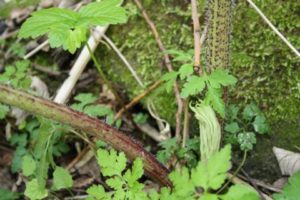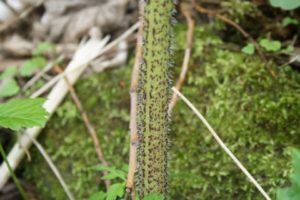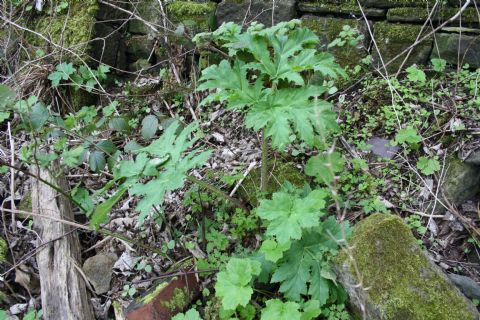April 8, 2014 / By yorkshiredampcourse
Giant hogweed is enjoying the warmer Spring weather and is growing away to produce one of the largest plants that you will see in the UK.
With plants getting to over 2 metres in height, the flowering spikes can be even larger, producing a whorl of white flowers in the summer, which then produce the seeds that will form the following year’s plants.
Dealing with the plant in this early part of the year will prevent seed growth, and over a few years reduce the population of this invasive weed vey significantly.
A note of caution please: giant hogweed has a sap that can cause skin blistering, especially when skin is exposed to sunlight. Caution is needed when cutting stems or working near the plant.
Identification of the plant can be made from its large leaves, but the real indicator are the stems, which are hairy, circular, and crimson spotted. The stems are hollow, like bamboo. Other similar plants, like butterburr, are sometime mistaken for giant hogweed, due to the large size of the leaves and their shape.

This is a close up of the stem showing the hairs and crimson speckling that is characteristic of giant hogweed.

Giant hogweed is classified as an invasive weed, because it spreads so rapid and shades out our native plant species. It requires specialist and persistent treatment to eradicate it using strong herbicides, which require licences for use. Yorkshire Dampcourse is qualified to do this work.

